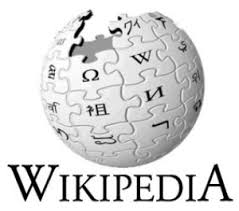filtre:
biodiversity
2025
In this episode, I’m joined by ecologist Thomas Crowther to discuss the critical importance of biodiversity as an intricate web of life that supports all other living beings, not just through the sheer number of species, but because of the complexity of interactions within ecosystems. Thomas highlights the power of data in empowering individuals to make informed choices that positively impact nature, and the critical need to address inequality in order to foster ecological recovery.
Pesticides affect a diverse range of non-target species and may be linked to global biodiversity loss. The magnitude of this hazard remains only partially understood. We present a synthesis of pesticide (insecticide, herbicide and fungicide) impacts on multiple non-target organisms across trophic levels based on 20,212 effect sizes from 1,705 studies. For non-target plants, animals (invertebrate and vertebrates) and microorganisms (bacteria and fungi), we show negative responses of the growth, reproduction, behaviour and other physiological biomarkers within terrestrial and aquatic systems. Pesticides formulated for specific taxa negatively affected non-target groups, e.g. insecticidal neonicotinoids affecting amphibians. Negative effects were more pronounced in temperate than tropical regions but were consistent between aquatic and terrestrial environments, even after correcting for field-realistic terrestrial and environmentally relevant exposure scenarios. Our results question the sustainability of current
The only publication for climate action, covering the environment, biodiversity, net zero, renewable energy and regenerative approaches. It’s time for The New Climate.
Emerging infectious diseases, biodiversity loss, and anthropogenic environmental change are interconnected crises with massive social and ecological costs. In this Review, we discuss how pathogens and parasites are responding to global change, and the implications for pandemic prevention and biodiversity conservation. Ecological and evolutionary principles help to explain why both pandemics and wildlife die-offs are becoming more common; why land-use change and biodiversity loss are often followed by an increase in zoonotic and vector-borne diseases; and why some species, such as bats, host so many emerging pathogens. To prevent the next pandemic, scientists should focus on monitoring and limiting the spread of a handful of high-risk viruses, especially at key interfaces such as farms and live-animal markets. But to address the much broader set of infectious disease risks associated with the Anthropocene, decision-makers will need to develop comprehensive strategies that include pathogen surveillance across s
2024
Le sommet des Nations-Unies sur la biodiversité a lieu tous les deux ans et constitue, avec les conférences sur le climat, le plus important sommet mondial sur l'environnement. Pourtant, il y a de fortes chances que vous n'en ayez pas (ou peu) entendu parler. Voici donc une brochure pour décrypter ce sommet international.
Natural ecosystems store large amounts of carbon globally, as organisms absorb carbon from the atmosphere to build large, long-lasting, or slow-decaying structures such as tree bark or root systems. An ecosystem’s carbon sequestration potential is tightly linked to its biological diversity. Yet when considering future projections, many carbon sequestration models fail to account for the role biodiversity plays in carbon storage. Here, we assess the consequences of plant biodiversity loss for carbon storage under multiple climate and land-use change scenarios. We link a macroecological model projecting changes in vascular plant richness under different scenarios with empirical data on relationships between biodiversity and biomass. We find that biodiversity declines from climate and land use change could lead to a global loss of between 7.44-103.14 PgC (global sustainability scenario) and 10.87-145.95 PgC (fossil-fueled development scenario). This indicates a self-reinforcing feedback loop, where higher levels
2023
Although humans have long been predators with enduring nutritive and cultural relationships with their prey, seldom have conservation ecologists considered the divergent predatory behavior of contemporary, industrialized humans. Recognizing that the number, strength and diversity of predator-prey relationships can profoundly influence biodiversity, here we analyze humanity’s modern day predatory interactions with vertebrates and estimate their ecological consequences. Analysing IUCN ‘use and trade’ data for ~47,000 species, we show that fishers, hunters and other animal collectors prey on more than a third (~15,000 species) of Earth’s vertebrates. Assessed over equivalent ranges, humans exploit up to 300 times more species than comparable non-human predators. Exploitation for the pet trade, medicine, and other uses now affects almost as many species as those targeted for food consumption, and almost 40% of exploited species are threatened by human use. Trait space analyses show that birds and mammals threaten
Backed by the UN, an alliance of conservationists and policymakers is devising new ways to finance the preservation of biodiversity by placing economic values on ecosystems. Some analysts say such schemes have the potential to boost conservation, but others are skeptical.
The steady destruction of wildlife can suddenly tip over into total ecosystem collapse, scientists studying the greatest mass extinction in Earth’s history have found. Many scientists think the huge current losses of biodiversity are the start of a new mass extinction. But the new research shows total ecosystem collapse is “inevitable”, if the losses are not reversed, the scientists said.
2022
Negotiators hope to put humanity on a path to harmonious coexistence with nature by 2050.




